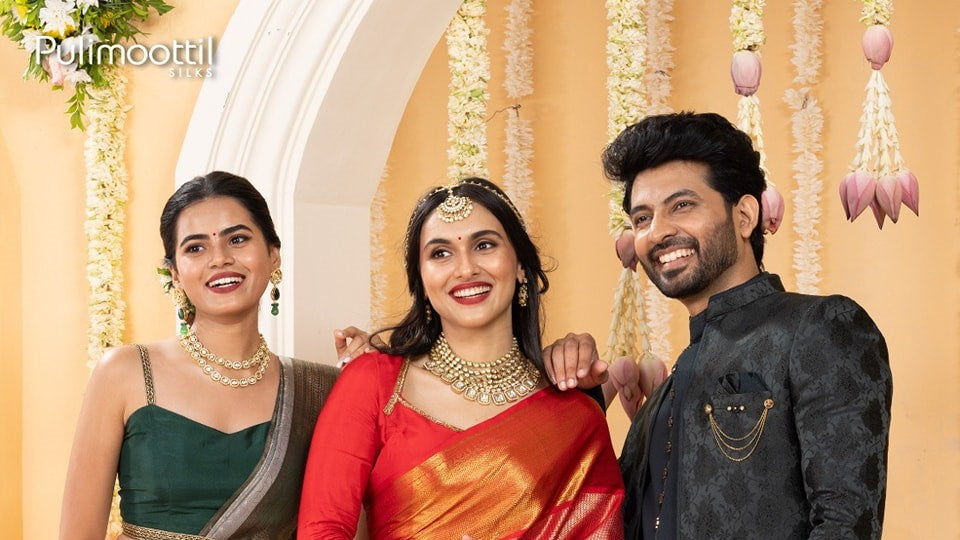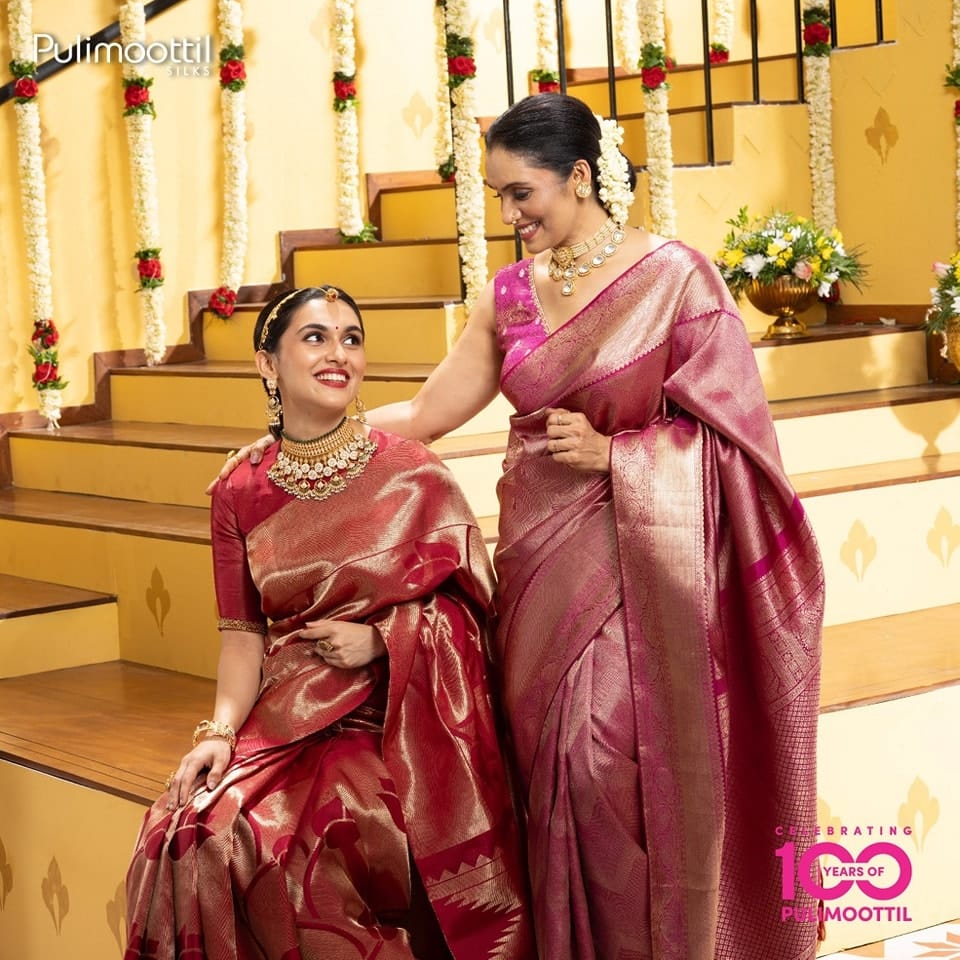
Regional Weaves of India: A Journey Through Saree Traditions

India is a land of diverse cultures, and one of its most treasured cultural symbols is the saree. Woven with centuries-old traditions, each region of India has its own distinct weaving technique, fabric, and design, reflecting the artistry of local weavers. From the rich silks of the South to the fine cottons of the East, let’s embark on a journey through some of the most exquisite regional sarees of India.
1. Banarasi Saree (Uttar Pradesh) – The Weave of Royalty
Origin & History:
Banarasi sarees originate from Varanasi (Banaras), a city with a long tradition of weaving. These sarees were once woven exclusively for royalty, featuring intricate zari (gold and silver thread) work inspired by Mughal motifs.
Unique Features:
-
Rich silk fabric with elaborate gold or silver brocade work.
-
Traditional motifs like florals, paisleys, and Mughal-inspired jaali work.
-
Types of Banarasi sarees include Katan (pure silk), Georgette, Organza, and Shattir.

Why It’s Special:
Banarasi sarees are known for their luxurious appeal, making them a staple in every Indian bride’s wardrobe. The heavy zari embroidery and intricate detailing make these sarees ideal for weddings and grand celebrations.
2. Kanjivaram Saree (Tamil Nadu) – The Queen of Silks
Origin & History:
Hailing from Kanchipuram in Tamil Nadu, Kanjivaram sarees are renowned for their high-quality silk and elaborate temple-inspired designs. The weaving tradition dates back over 400 years and is deeply rooted in South Indian heritage.
Unique Features:
-
Thick, durable silk fabric that adds a regal touch.
-
Traditional motifs like peacocks, chariots, and mythological figures.
-
Contrasting borders with heavy zari work.

Why It’s Special:
Kanjivaram sarees are known for their durability and can last for generations if maintained well. They are often chosen for weddings, festivals, and temple visits, symbolizing prosperity and grace.
3. Chanderi Saree (Madhya Pradesh) – The Sheer Beauty
Origin & History:
Chanderi sarees are woven in the town of Chanderi in Madhya Pradesh, known for its historic weaving legacy that dates back to the 13th century. These sarees were once favored by royalty due to their lightweight elegance.
Unique Features:
-
A blend of silk and cotton, making them breathable yet luxurious.
-
Delicate motifs like florals, coins, and birds woven into the fabric.
-
A subtle sheen that adds grace and sophistication.

Why It’s Special:
Chanderi sarees are perfect for summer weddings and festive occasions, offering a combination of comfort and regal charm.
4. Tussar Silk Saree (Jharkhand & Bihar) – The Wild Beauty
Origin & History:
Tussar silk, also known as ‘Kosa silk,’ is produced by silkworms that feed on wild forest trees. Primarily woven in Jharkhand, Bihar, and Chhattisgarh, this fabric has a unique texture and earthy appeal.
Unique Features:
-
Natural golden sheen, making it different from traditional mulberry silk.
-
Hand-painted or block-printed designs with tribal or nature-inspired motifs.
-
Lightweight and breathable, perfect for warmer climates.

Why It’s Special:
Tussar silk sarees are loved for their organic feel and are an excellent choice for women who prefer a raw, earthy aesthetic over the polished finish of traditional silks.
5. Paithani Saree (Maharashtra) – The Handwoven Masterpiece
Origin & History:
Paithani sarees originate from the town of Paithan in Maharashtra and are known for their vibrant silk fabric and intricate handwoven motifs.
Unique Features:
-
Pure silk fabric with handwoven zari borders.
-
Traditional motifs include parrots, peacocks, and lotuses.
-
A signature feature is the contrast between the body and pallu, creating a striking visual effect.

Why It’s Special:
Paithani sarees are a symbol of Maharashtrian pride and are considered a treasured heirloom, often passed down through generations.
6. Patola Saree (Gujarat) – The Double Ikat Marvel
Origin & History:
Patola sarees are woven in Patan, Gujarat, using a highly complex double ikat technique, where both the warp and weft are dyed before weaving.
Unique Features:
-
Intricate geometric patterns, often inspired by nature and mythology.
-
Extremely labor-intensive process, taking months to weave a single saree.
-
Silk fabric that is highly durable and does not fade over time.

Why It’s Special:
Due to their rarity and craftsmanship, Patola sarees are considered a symbol of wealth and prestige, often worn by aristocrats and royalty in ancient times.
7. Baluchari Saree (West Bengal) – The Storytelling Weave
Origin & History:
Baluchari sarees, woven in Murshidabad and Bishnupur, are famous for their depictions of mythological stories woven into the pallu.
Unique Features:
-
Scenes from epics like the Ramayana and Mahabharata woven in silk.
-
Rich colors and contrast borders that add depth to the fabric.
-
A smooth texture, making them comfortable to drape.

Why It’s Special:
Baluchari sarees are a true reflection of Bengal’s rich artistic tradition and are often worn during Durga Puja and other cultural celebrations.
8. Assam Silk Saree (Assam) – The Pride of the Northeast
Origin & History:
Assam is known for its unique silk varieties, primarily Muga, Eri, and Pat silk, each woven with distinct techniques.
Unique Features:
-
Muga silk – Has a natural golden tint and is highly durable.
-
Eri silk – Known as ‘Ahimsa Silk’ because it is non-violent and warm.
-
Simple yet elegant motifs inspired by nature and Assamese culture.

Why It’s Special:
Assam silk sarees are a rare and eco-friendly choice, making them highly sought after by ethical fashion enthusiasts.
Conclusion
India’s saree tradition is a rich tapestry of art, culture, and craftsmanship. Every regional weave tells a story—whether it's the grandeur of Banarasi silk, the elegance of Chanderi, or the intricate storytelling of Baluchari. Supporting these handcrafted sarees not only preserves our cultural heritage but also helps sustain the livelihoods of artisans who have kept these traditions alive for centuries.
So, the next time you drape a saree, remember that you're wearing a piece of history, woven with love and tradition.
Which regional saree is your favorite? Share your thoughts in the comments below!


